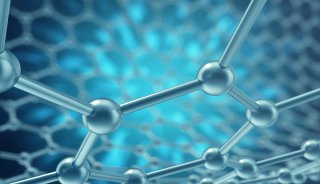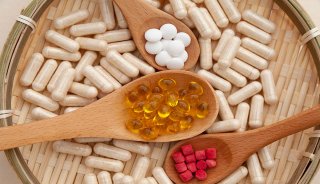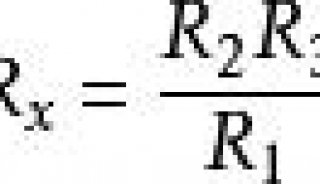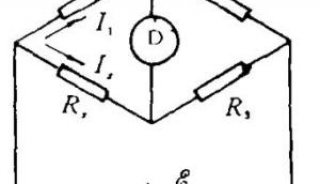酵母转化的几种方法
Modified Yeast Transformation
Inoculate cells from an overnight culture into 50 ml YEPD and incubate at 30°C with shaking. Typically, add 0.1 to 0.2 ml saturated culture in the evening to get an of OD600 = 1 to 2 the next morning.
Transfer enough of this culture to 300 ml YEPD to produce an OD6oo=0.2 (ca. 20 mls.). Incubate at 30°C to an OD600 of 6.5 to 8.5. I often grow three cultures overnight starting with different amounts of inoculum and use the one at the best OD in the morning.
Pellet the cells in a GSA rotor (5000 rpm, 5 min., RT).
Discard the supernatant and resuspend the pellet in 10 ml T.E. Transfer the cells to a 50 ml centrifuge tube.
Pellet the cells in an SS34 rotor (7000 rpm, 5 min., RT).
Discard the supernatant and resuspend the pellet in 10 ml sterile 1 X TE/LiAC (made fresh from stocks of 10 X TE [0.1 M Tris-HCI, 0.01 M EDTA, pH 7.5] and 10X LiAC [1 M lithium acetate adjusted to pH 7.5 with dilute acetic acid]. Repeat.
Pellet cells in microfuge at 7000rpm, discard sup. and resuspend in 1.5mL TE/LiAC.
Add 100ul cells to the plasmid DNAs (1-5 ug) and single-stranded carrier DNA (20ug) in a microfuge tube. The carrier DNA is produced by dissolving salmon sperm DNA in TE, sonicating it to reduce its viscosity, extracting it with phenol/chloroform, and precipitating it with ethanol. The DNA is resuspended at a concentration of 10 mg/ml in TE, placed in a boiling water bath for 20 min., and immediately cooled on ice. The carrier DNA solution can be stored in aliquots at-20°C.
Add 700ul ml sterile PEG solution (40 % PEG, 1 X TE, 1 XLiAC, made fresh from stocks of 50 % PEG 4000, 10 X TE, 10 X LiAC) to each tube and incubate at 30°C for 45min. up to 1.5hrs (longer is fine if maximum efficiency is not required; 1.5hrs is optimum) with shaking.
Add dimethyl sulfoxide to 10% (70uL). Mix gently.
Heat pulse for 15 min. in a 42°C waterbath.
Pellet cells in microfuge at 7000rpm, pour off most of sup and plate on appropriate medium.
Incubate the plates at 30°C until colonies appear, usually 2-3 days.
Quick and Easy TRAFO Protocol
--------------------------------------------------------------------------------
This Protocol allows for TRAFO with any Yeast cell source
Referenece; Gietz, R.D. and R.A. Woods. (2002) TRANSFORMATION OF YEAST BY THE Liac/SS CARRIER DNA/PEG METHOD. Methods in Enzymology 350: 87-96.
When just a few transformants are sufficient, such as the transformation of a test plasmid or a GAL4BD fusion plasmid, the following protocol can be used. This procedure is very flexible and can be applied to yeast cells from a number of different sources; however, for best results, use cells from a freshly grown plate.
All solutions used in this protocol are described in the TRAFO Solutions Page
--------------------------------------------------------------------------------
Rapid Transformation Protocol
--------------------------------------------------------------------------------
Day 1
1. Inoculate the yeast strain in a 2 cm2 patch onto YPAD agar (YPD 12 supplemented with 100 mg adenine hemisulphate per liter) and incubate overnight at 30C. Alternatively, the yeast strain can be inoculated into 5 ml of liquid medium (2x YPAD or SC selection medium and incubated on a shaker at 30C and 200 rpm.
--------------------------------------------------------------------------------
Day 2
1. Heat a tube of carrier DNA in a boiling water bath for 5 min and then chill in ice/water.
2. Scrape a 50 ml blob of yeast from the YPAD plate and suspend the cells in 1 ml of sterile water in a 1.5 ml microcentrifuge tube. The suspension will contain about 5 x 108 cells. Cells grown overnight in 2x YPAD broth will reach a titer between 1 and 2 x 108/ml; the titer in SC medium will be about 5 x 107/ml. Harvest 2 ml of a YPAD culture and 5 ml of a SC culture. Note: cells in log phase growth on agar or in liquid medium will transform with high efficiency.
3. Pellet the cells at top speed in a microcentrifuge for 30 sec and discard the supernatant.
4. *Add the following components of the Transformation Mix to the cell pellet in the order listed:
Component
Volume (µl)
1. PEG 3500 50% w/v
240 µl
2. LiAc 1.0 M
36 µl
3. Boiled SS-Carrier DNA (2 mg/ml)
50 µl
4. Plasmid DNA (0.1 to 1 µg) plus water
34 µl
Total Volume
360 µl
Be sure to vortex mix the carrier DNA before pipetting it.
5. Incubate the tube in a water bath at 42°C for 40 to 60 min. Many laboratory strains will yield up to 1 x 105 transformants/mg plasmid after 60 min incubation. Extending the time at 42°C to 180 min increases the yield to > 1 x 106/µg with some strains.
6. Microcentrifuge at top speed for 30 sec and remove the Transformation Mix with a micropipettor.
7. Pipette 1.0 ml of sterile water into the tube and resuspend the cells by stirring with a micropipette tip and then vortex mixing vigorously.
8. Pipette 10 and 100 µl samples onto plates of appropriate SC selection medium, incubate at 30°C for 3-4 days and isolate transformants. The 10 µl samples should be pipetted into 100 µl puddles of sterile water.
This protocol can be used with cultures that have been stored at room temperature or in a refrigerator. The yield will be reduced with older cultures but will generally be sufficient to isolate a number of transformants of the desired genotype.
Yeast Cell Preparation
This protocol merges a typical LiAc protocol with the reducing agent component of the One-step method. It gives >103/ ug efficiency for our strain. Recipe is for 800 transformations (90 mls cells).
Grow 50 ml culture in 2xSC-leu 1, overnight (light innoculum, ie 20 ul of cells).
Next morning, add 40 mls YPAD, grow 2-3 hours more.
Spin down 100 ul of the culture (=1 transformation's worth) and check pellet size. Should be approx 3 ul. If much greater, use less culture for following steps 2.
Spin down cells. 2000 r.p.m., 4 minutes. Resuspend in sterile water then spin down again.
Mix: 72 mls water, 9 mls 10xTE pH 7.5, 9 mls 1M LiAc.
Resuspend yeast in the 90 mls LiAc/TE, put back in same flask (rinsed with sterile water). Shake at 30oC for 30 mins.
Add 600 ul beta-mercaptoethanol. Shake at 30oC for 30 minutes.
Add 1.7ml of 10mg/ml ss carrier DNA 3. Cells ready to use.
We use selection because we are maintaining a plasmid. Presumably the main thing is that cells not be stationary.
If you are going to plate transformations, a larger pellet could be used - up to 10 ul?
Boehringer 146-7-140. We omitted this for months. It didn't seem to affect transformation efficiency at all, but maybe it affects non-homologous integration?
Large Scale Transformation
Dispense yeast competent cells into deepwells with DNA (100 ul/well).
Capmat deepwells. Incubate at 30oC, 30 mins, on side.
Resuspend cells by vortexing.
Dispense PEG 1 into deepwell wih yeast/DNA (250 ul/well).
Pipette up and down to mix cells and PEG2.
Capmat deepwells. Incubate at 30oC for 15-30 mins, on side.
Heat shock at 45oC for 15 mins.
Pellet cells at 3000 r.p.m. for 15 mins at least. Yeast form diffuse layer on bottom of well.
Tip PEG off quickly and carefully. Wipe PEG off top of box. Put caps on. Resuspend by vortexing.
To plate on solid medium:
We plate 24 transformations (2 rows of deepwell) per Nunc omniplate, using the 12 channel pipettor to put 5ul of cell suspension (in residual PEG) onto the plate, then smearing this about halfway down the plate. We get several hundred transformants from this. We get about 0-10 transformants when the DNA used should not integrate ie mTn insertions in vector.
Grow as usual for transformation 3.
To select in liquid:
Add 580 ul of 2xSC(dropout). Put capmat on and grow with agitation4 for 3-5 days, until pellet visible.
If rough equalization of growth state is desired, pellet cells, discard medium and grow overnight with fresh medium.
Pellet cells and wash once with water. Discard water and resuspend cells by vortexing in residue.
We then add 140 ul of water, mix by pipetting, and plate 6 ul to SC-leu -ura plate. We use the rest of the suspension for filter assays and -70oC storage.
PEG: 400 mls 50% PEG, 50 mls 10x TE pH 7.5, 50 mls 1M LiAc pH7.5. We use relatively fresh mix, but this could be superstition.
I guess you could invert, but the capmats don't seal brilliantly. Could use plate sealers (e.g. Corning Costar from VWR 29442-310, $24/100)
Agar in omniplates seems to dry out quicker, so make sure incubator is humid.
I had the Yale machine shop make metal holders that hold 3 deepwell boxes each. I attached these to the flat disc of a vertical rotating wheel (Glas-Col rugged rotator, from Fisher). The boxes thus get rotated, pretty much like tubes in a roller drum. Shaking vertically in an orbital would probably be okay too.
Equipment required
Deepwell titer dishes: Beckman 267006 ($83/24)
Capmats for same: Beckman 267005 ($22/10) (Beckman 1-800-742-2345) Alternatively try Polyfiltronics (http://www.polyfiltronics.com). Ususlly cheaper but I'm not sure what they have. Best to get caps and boxes from same source, so you can complain when they don't fit perfectly. The essential feature of these boxes is that the wells are individually formed, with gaps between so that water can get up and surround them during the heat shock. Make a little hole in the sidewall at each end of the Beckman boxes, to allow the air to escape.
Microplate carriers for centrifuge that allow you to spin deepwell boxes: For this, the microplate carriers must lack a crossbrace. We have a Sorvall T6000D, with H-1000B rotor. With this we use braceless microplate carriers (#11093) and also two earlier carriers that I removed the crossbraces from (#11065). The only apparent problem with removing the cross braces is that now they're slightly imbalanced (and they make me nervous).
Nunc Omnitrays: Rectangular petri dish, handy for using 12 channel pipettor to plate. (Fisher #12-565-296; $34/60). These can be washed with water, soaked in 3% hydrogen peroxide, and reused.
8 or 12 channel manifold pipettor.
Large orifice tips for mixing PEG.
Reservoirs for holding liquid for multichannel pipettors.
Microplate attachment for vortexer.
-
焦点事件

-
焦点事件














